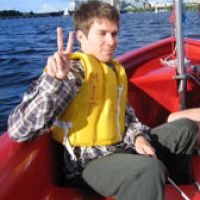Willenbring & Jerolmack, 2016
The null hypothesis: steady rates of erosion, weathering and sediment accumulation during Late Cenozoic mountain uplift and glaciation.
Willenbring, J.K. Jerolmack, D.J. (2016)
Terra Nova
-
Luquillo, INVESTIGATOR
-
Luquillo, INVESTIGATOR
Abstract
At the largest time and space scales, the pace of erosion and chemical weathering is determined by tectonic uplift rates. Deviations from equilibrium arise from the transient response of landscape denudation to climatic and tectonic perturbations. We posit that the constraint of mass balance, however, makes it unlikely that such disequilibrium persists at the global scale over millions of years, as has been proposed for late Cenozoic erosion. We synthesize weathering fluxes, global sedimentation rates, sediment yields and tectonic motions to show a remarkable constancy in the pace of Earth-surface evolution over the last 10 Ma and support the null hypothesis – that global rates of landscape change have remained constant over this time period, despite global climate change and mountain building events. This work undermines the hypothesis that increased weathering due to mountain building or climate change was the primary agent for a decrease in global temperatures.
Citation
Willenbring, J.K. Jerolmack, D.J. (2016): The null hypothesis: steady rates of erosion, weathering and sediment accumulation during Late Cenozoic mountain uplift and glaciation . Terra Nova. DOI: 10.1111/ter.12185
 This Paper/Book acknowledges NSF CZO grant support.
This Paper/Book acknowledges NSF CZO grant support.
Explore Further


